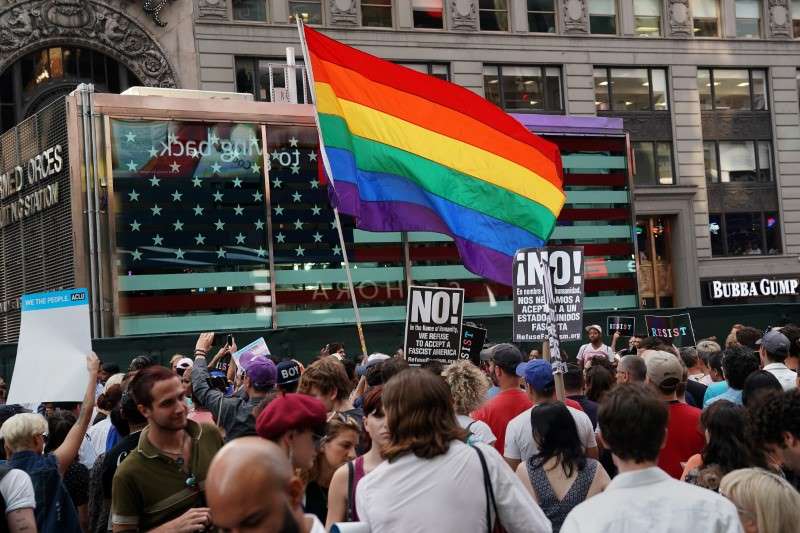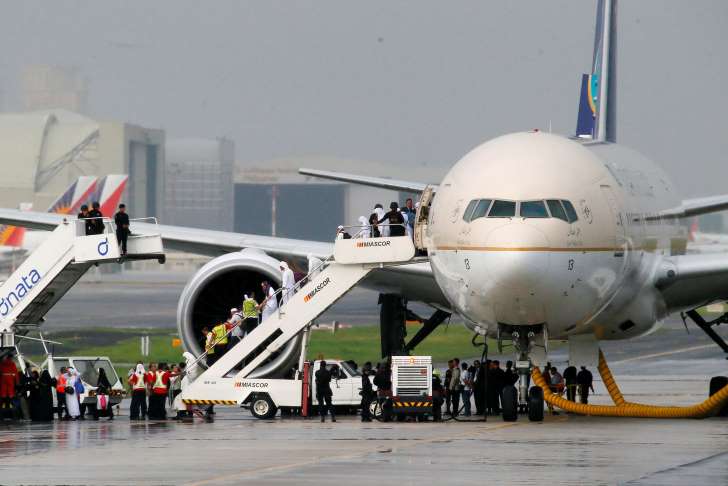May 22, 2013
By Geeta Goindi
Bethesda, MD – Inaugurating an exhibition on the ‘Sikh Heritage of India’ at the Gandhi Memorial Center, on May 18, Saturday afternoon, Indian Ambassador Mrs. Nirupama Rao lauded the contributions of Sikhs to their motherland and the Sikh philosophy of humanism, pluralism and universal brotherhood.
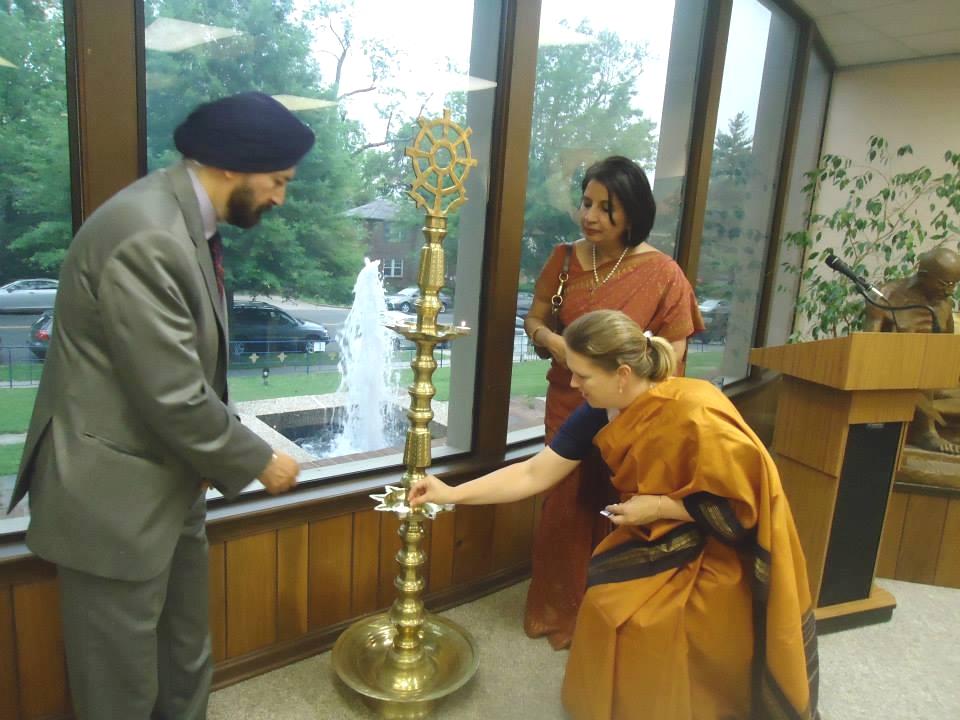
May 22, 2013
By Geeta Goindi
Bethesda, MD – Inaugurating an exhibition on the ‘Sikh Heritage of India’ at the Gandhi Memorial Center, on May 18, Saturday afternoon, Indian Ambassador Mrs. Nirupama Rao lauded the contributions of Sikhs to their motherland and the Sikh philosophy of humanism, pluralism and universal brotherhood.

Carrie Trybulec, Director of the Gandhi Memorial Center, in Maryland, lighting the traditional Indian lamp at the inauguration of the exhibition on ‘Sikh Heritage of India’, with Indian Ambassador Mrs. Nirupama Rao (right) and Dr. Manmohan Singh Kumar of the IMF
“Sikhs form so much a treasured part of the heritage of India. They have contributed so much to the greatness of India, to where we stand today, to our freedom above everything”, she told an eminent and diverse gathering at the Gandhi Center. “The Sikh Regiment is the most decorated regiment in the Indian army”, she said.
The event afforded an opportunity for the envoy to reach out to members of the Sikh community and remind them of their “unbreakable” bond with India. “Sometimes, I come across some young friends who are not deeply aware of this connection that we have which is unbreakable”, she said. “We all know, in a large, diverse, plural society, there will be sometimes differences, misunderstandings. But, they heal. India is a place of healing. India is a place where we can look beyond the past and look to the future because that is where our common interest lies. I think, we should never forget that, whoever we are. Whether we are Malayalees or Telugus or Tamils or Sikhs or Bengalis or Kashmiris, we are all part of this great mosaic, this great country called India. We should keep that in mind. That should be our prayer as we move forward, as Gandhi ji would have said”.
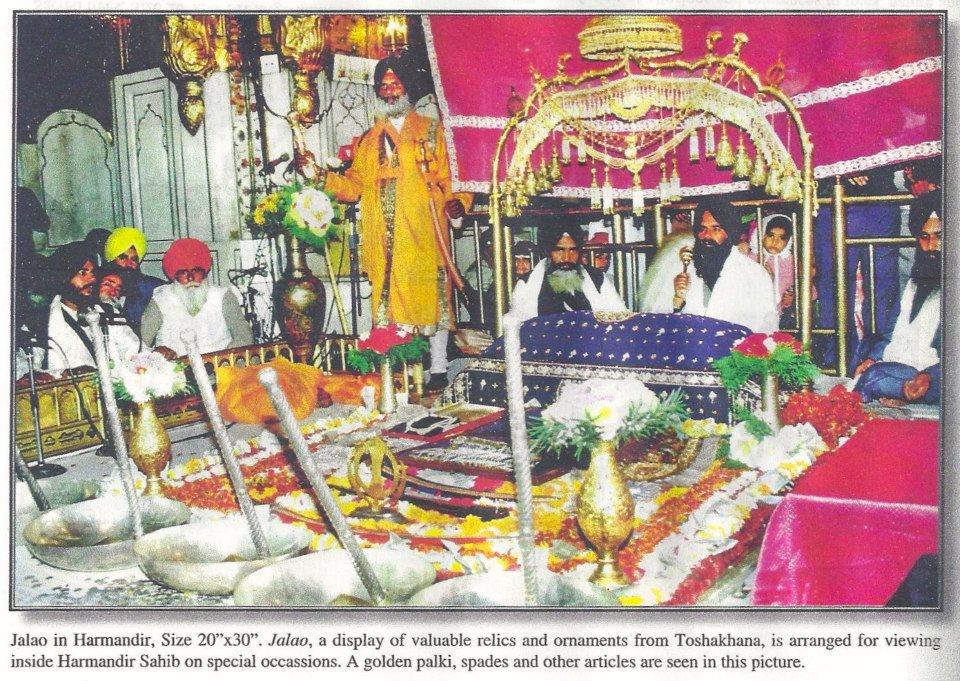
Jalao in Harmandir Sahib, Size 20"x30". Jalao, a display of valuable relics and ornaments from Toshakhana is arranged for viewing inside Harmandir Sahib on special occasions. Photo courtesy: Gandhi Memorial Center
On hand, at the inauguration of the exhibition, were: Carrie Trybulec, Director of the Gandhi Memorial Center; Dr. Manmohan Singh Kumar, Assistant Director and Chief of General Resources and SDR Policy Division in the Finance Department of the International Monetary Fund (IMF); Srimati Kamala, Founding Director of the Gandhi Memorial Center and President of the Mahatma Gandhi Memorial Foundation; and Mr. Sridharan Madhusudhanan, Counsellor of Press, Information and Culture at the Indian Embassy.
The exhibition, the work of eminent photographer Sandeep Shankar, is on display at the Gandhi Center until May 31, and is being presented in collaboration with the Indian Council for Cultural Relations in New Delhi and the Embassy of India in Washington.
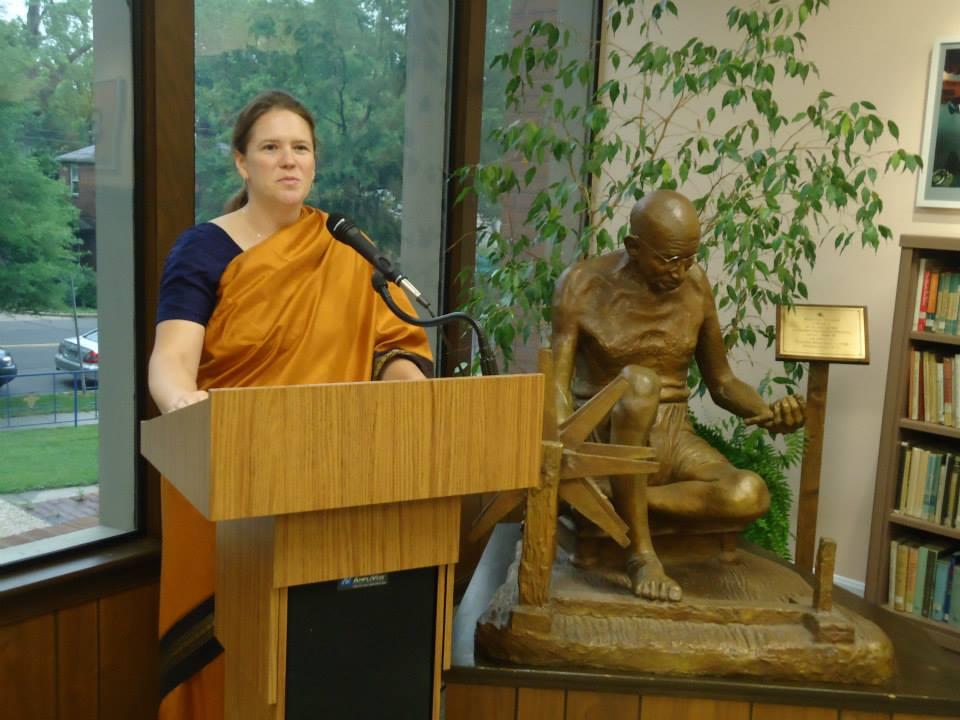
Carrie Trybulec, Director of the Gandhi Memorial Center, warmly welcoming an eminent gathering at the inauguration of the exhibition on ‘Sikh Heritage of India’ which is currently on display at the Gandhi Center
Warmly welcoming the gathering to the Gandhi Center, Carrie admitted, “without the wonderful support of the Indian Embassy here in Washington, DC, this (the exhibition) would not be possible. It is an honor and a pleasure and a blessing for us to share with you this exhibit on the Sikh Heritage of India, she said.
In her introduction of Ambassador Rao, she noted that the envoy has been a long-time friend of the Gandhi Center. “I think it is always such a wonderful opportunity for us to share the wonderful, rich cultural and artistic traditions of India in the presence of someone who has given so much of her heart and dedication to the arts”, Carrie said.
Ambassador Rao underscored, “This pioneering exhibition provides a glimpse of the rich Sikh heritage and traditions”. She noted that Sandeep Shankar has roamed the length and breadth of India for more than two decades in an effort to photographically document the heritage of Sikhism. “So, it is really a labor of love for him”, she said. “Some of the images are of rare manuscripts, illustrated folios, ‘Hukumnamas’, artefacts in Gurudwaras. This whole set of photographs is just to awaken your interest”.
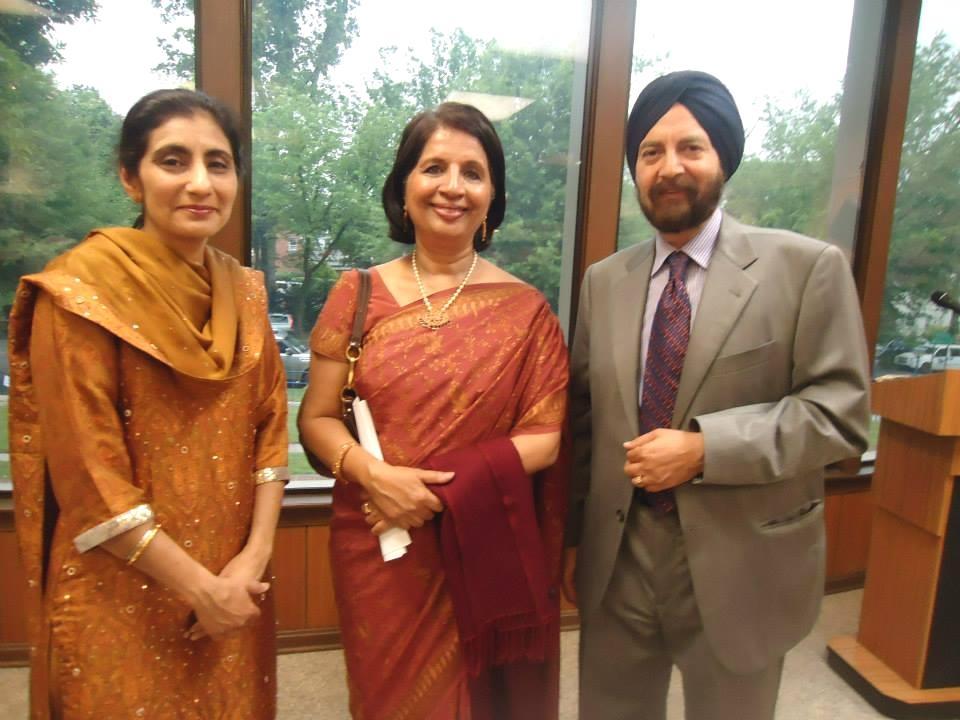
Indian Ambassador Mrs. Nirupama Rao is flanked by Mrs. Kiran Singh and Dr. Manmohan Singh Kumar, IMF, at the inauguration of the exhibition on ‘Sikh Heritage of India’ which will be held until the end of the month at the Gandhi Memorial Center, in Maryland
The envoy hoped, “more young people will come to visit this exhibition, so that they can study about Sikhism and its rich heritage. This will awaken their intellectual curiosity”, she said.
About the community here, she noted that the name of Dalip Singh Saund, the first Indian-American elected to the US Congress in 1956, stands out. Recalling a recent visit to Capitol Hill with Indian Minister of Human Resource Development Dr. M. Mangapati Pallam Raju where they met for breakfast with Congressman Ami Bear (Democrat-California) — the third Indian-American to be elected to the US Congress after Saund and Bobby Jindal, current Governor of Louisiana — she told the gathering about a portrait of Saund in a hall of Congress. “One of my proudest moments was to be able to take a photograph.”, she said “It was as if he was looking over us and wishing us well in our quest to build better and better friendship between the United States of America and our mother India”.
Emphasizing the legacy of the first Indian-American lawmaker, Ambassador Rao pointed out, “When Katherine Mayo published her very controversial and critical work, ‘Mother India’, in the 1920s, it was Dalip Singh Saund who wrote the rejoinder to that titled, ‘My Mother India’. Dalip Singh Saund, as a true patriot, as a very committed Indian, decided to answer Katherine Mayo”, she said.
The envoy dwelt on the contributions of the Sikh community to India’s struggle for independence. She recalled it was exactly 100 years ago that the Ghadar Party was formed in California by Punjabi immigrants to this country, both Sikhs and Hindus, who came either to study at the universities in the state or as farmers and agricultural workers. “They made a great deal of sacrifice for the cause of our freedom”, she said.
Ambassador Rao noted, in 1921, when the British government handed over the keys of the Golden Temple to Baba Uarak Singh, the Akali leader, Mahatma Gandhi sent him a telegram recognizing the role of Sikhs towards attaining India’s independence. Gandhi ji wrote, “Congratulations. The first decisive battle of Indian freedom has been won”.
Ambassador Rao recalled, “We had Jallianwala Bagh where a vast number of those who sacrificed their lives were Sikhs – 799 out of 1,300 people who died in that massacre”.
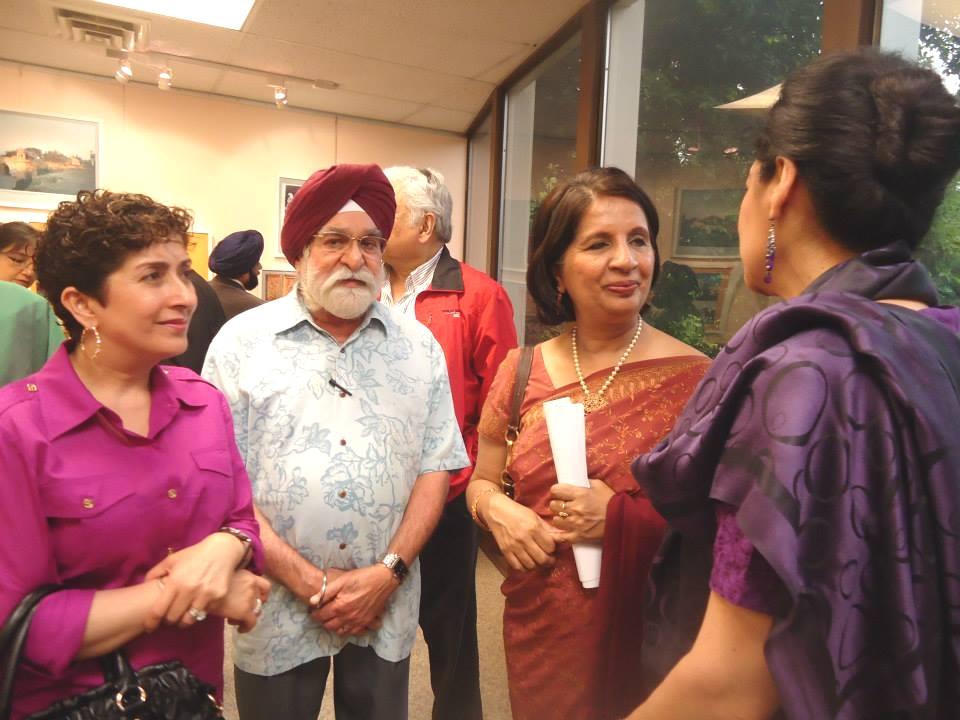
Indian Ambassador Mrs. Nirupama Rao (second from right) interacting with guests at the exhibition on ‘Sikh Heritage of India’ which is on display at the Gandhi Center until May 31, and is being presented in collaboration with the Indian Council for Cultural Relations in New Delhi and the Embassy of India in Washington
Dr. Manmohan Singh expressed “deep appreciation to the Indian Ambassador and her office, the Gandhi Center and the ICCR for organizing this beautiful exhibition. It is a great initiative and provides an opportunity to remind ourselves of the Sikh heritage of India”, he said. “And what an amazing heritage it is”!
Dr. Singh pointed out that in the 60-plus artefacts on display, “we see the extraordinary range, depth, beauty and power of Sikhism spread over more than five centuries in India. The artefacts are a testimony of the wonderful blend of the spiritual and the secular that is Sikhism with its emphasis on excellence, message of caring and sharing, of helping the weak and oppressed, of plurality and ‘Sarbat da bhala’ (welfare of all)”, he said.
It is noteworthy that a special section has been added to the exhibition on the Virasat-e-Khalsa, the Sikh museum in Punjab which opened to the public in November 2011 and is drawing thousands of visitors daily. Located in Anandpur Sahib on a 100-acre site, the museum provides a valuable insight into the events that occurred 500 years ago which gave birth to Sikhism and resulted in the establishment of the Khalsa Panth. The museum highlights the vision of the Gurus – the eternal message of peace and brotherhood which they delivered to all mankind. It displays the rich culture and heritage of Punjab. Offering an amazing educational and spiritual experience, Virasat-e-Khalsa is a must see!
Community Special by MYDOSTI.COM















































































































